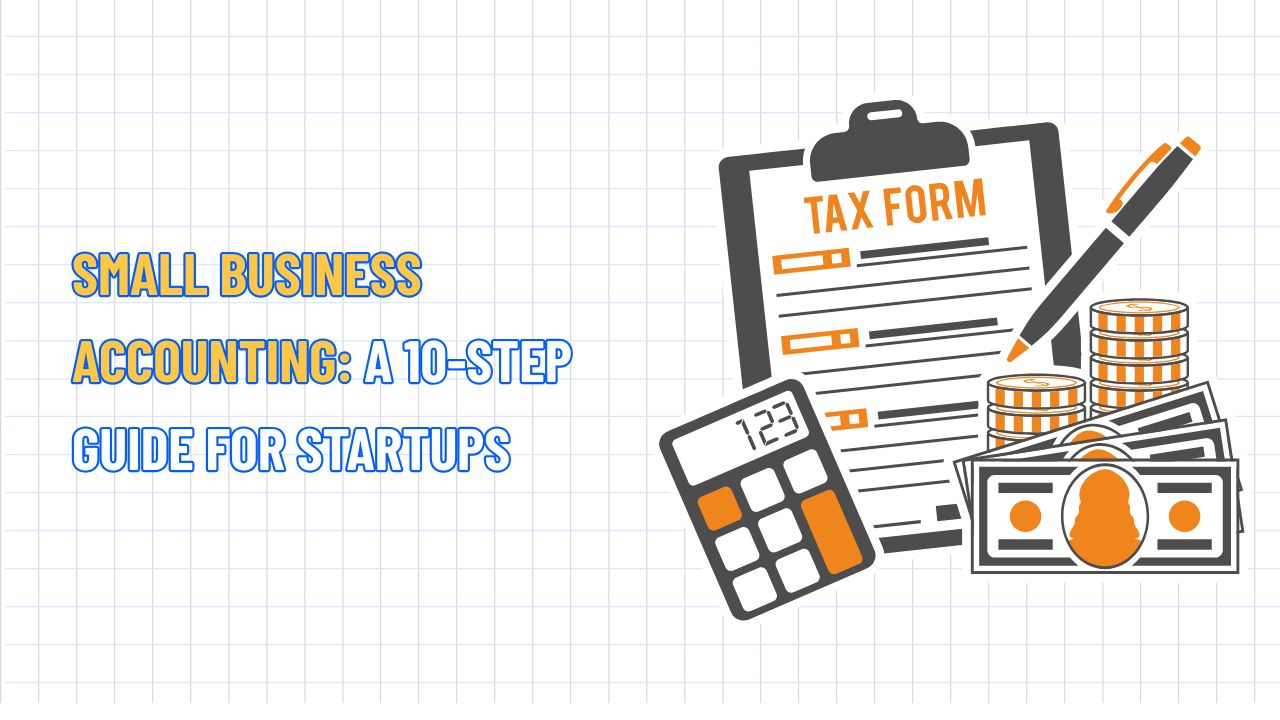The 10-Step Guide to Writing a Great Nonprofit Business Plan
Table of Contents Hide
If you aspire to elevate your nonprofit organization to new heights, a nonprofit business plan is the key to turning your vision into reality, securing donors, and ensuring sustainable growth. With NextSky is insights, you’ll have a solid foundation to propel your organization forward!
What is a nonprofit business plan?
A nonprofit business plan is a comprehensive strategic document that outlines your organization’s current state and charts its course for the next three to five years. It clearly defines the goals to achieve and details specific steps to realize them. This is a living document, requiring regular updates to reflect evolving circumstances and strategies.

It is the backbone for all activities, clarifying who will do what, when, and how to create a positive impact. An effective plan is concise yet comprehensive. Depending on your organization’s scale, it may range from seven pages for smaller groups to 30 for larger, established entities.
Read more: Successful Business Plan with the Secret from A to Z
10 steps to build a nonprofit business plan

1. Executive summary
The executive summary is your plan’s “opening pitch,” concise and compelling, typically 1–2 pages. It’s your chance to introduce your mission, goals, and growth plans in a clear, inspiring way that entices readers to dive deeper. Key elements include:
- Your organization’s mission and the social issue it addresses.
- Overview of programs, services, and beneficiaries.
- Funding needs and key financial projections.
- Notable achievements or unique strengths.
Write this section last to ensure it accurately summarizes the whole plan. Tailor the tone to suit your audience, such as donors or partners.
Example: For a youth vocational training nonprofit: “Over the past two years, we’ve empowered 300 young people with stable jobs. Aiming to serve 600 youth by 2026, we seek $150,000 to establish two new training centers. This is critical in expanding our social impact and building a skilled workforce.”
2. Organization overview
This section introduces your identity, origins, and what sets you apart. It builds credibility, fosters trust, and creates an emotional connection with your audience. Include:
- History: When and why your organization was founded.
- Mission & vision: Core values and long-term aspirations.
- Key achievements: Milestones, such as projects completed, people served, or specific impacts.
- Unique differentiators: What makes you stand out, such as innovative approaches, technology use, or community engagement.
Add a timeline or chart to illustrate your organization’s journey for greater visual impact.
For example, a nonprofit supporting orphaned children might write: “Founded in 2018 to open educational doors for underprivileged children, we’ve awarded 500 scholarships and built three orphanages. Using technology to track learning progress, we offer personalized support, distinct from traditional programs.”
3. Programs and services
This section showcases how your organization turns its mission into reality. Avoid vague statements and focus on specific activities, from community programs to direct services or long-term initiatives.
- Key programs/services: Highlight tangible efforts, like free classes for underprivileged children, mobile clinics for remote areas, or disaster relief.
- Beneficiaries: Clearly define who benefits and the value they receive.
- Concrete results: Use compelling metrics, e.g., “5,000 nutritious meals provided to underprivileged children” or “200 families relocated to safe housing.”
- Plans: Share upcoming initiatives, like expanding programs or launching new efforts to amplify impact.
Example: “Last year, our reforestation program restored 50 hectares, improving air quality for over 10,000 residents. In 2025, we aim to expand by 20 hectares with 500 volunteers.”
4. Industry analysis
Demonstrate a deep understanding of your operating context and relevant factors. A well-researched, data-backed analysis shows seriousness and strategic foresight.
- Issue scale: Highlight the severity or scope of the problem you address, supported by credible data.
- Competitors: Analyze similar organizations, noting what sets you apart and your unique advantages.
- Trends and challenges: Address external factors like policy changes, economic conditions, or social crises, showing preparedness and adaptability.
Example: A hunger relief nonprofit might write: “According to the USDA, one in eight people faces food insecurity. Unlike fixed food banks, our mobile truck program delivers food to rural areas, reaching 2,000 households monthly.”
5. Audience analysis
Understanding your beneficiaries, donors, and volunteers is foundational for effective programs and fundraising. Describe:
- Demographics: Age, location, and socio-economic status of beneficiaries.
- Specific needs: Challenges your programs address.
- Engagement strategies: How you attract, retain, and involve each group.
Segment audiences clearly:
- Beneficiaries want tangible benefits.
- Donors care about long-term impact and results.
- Volunteers seek opportunities to contribute and connect.
Example: A nonprofit aiding unemployed women might state: “We serve women aged 25–45 in urban areas seeking reentry into the workforce. Our flexible online courses accommodate busy schedules.”
6. Marketing plan
An effective marketing plan builds awareness, fosters community, and secures sustainable funding. Focus on clear, actionable, measurable strategies:
- Target audience: Identify who you’re reaching—donors, volunteers, or beneficiaries.
- Marketing channels: Choose platforms like social media, email marketing, events, or strategic partnerships.
- Key messaging: Use concise, inspiring slogans, e.g., “$10 can send a child to school.”
- Measurable goals: Set targets, like new donor numbers, event participation, or social media engagement.
Example: A nonprofit might plan to use Instagram to share success stories, targeting 1,000 new followers, and host fundraising events to engage 200 donors annually.
7. Daily operations
Outline how your organization operates daily to achieve its goals. A straightforward, feasible process reassures donors of your strategic and executional capabilities.
- Daily activities include core tasks like event planning, program coordination, and volunteer management.
- Partnerships: Collaborations with community groups, schools, businesses, or suppliers to amplify impact.
- Legal requirements: Licenses, certifications, or regulations your organization follows.
- Staff structure: Roles, responsibilities, and future hiring plans.
Example: An education nonprofit might write: “We partner with five public schools for after-school classes. All volunteers are trained in child safety, and we plan to hire three full-time staff by 2026.”
8. Impact plan
The impact plan is critical, demonstrating how you create change and proving effectiveness to donors. Clarify:
- Specific goals: E.g., “Reduce rural child illiteracy by 15% in three years.”
- Execution strategies: Detail programs, activities, or initiatives to achieve goals.
- Success metrics: Explain tracking methods, like surveys, periodic reports, or data analysis.
Example: “We aim to improve reading skills for 400 children by 2025, measured by standardized tests. Last year’s summer program significantly boosted 85% of students’ scores.”
9. Financial plan
A clear financial plan proves your ability to manage resources effectively, building trust in your sustainability. Include:
- Current financial status: List income, expenses, and cash reserves.
- Funding sources: Specify support from grants, individual donations, or events.
- Financial projections: Create a 3–5-year budget to show long-term vision.
- Fundraising strategies: Explain how you’ll address funding gaps.
- Contingency plans: Outline responses to funding shortfalls.
Use charts to visualize income and expenses, placing detailed tables in the appendix to keep the main content concise.
Example: “We project $400,000 in 2025 revenue, with 50% from grants, 30% from individual donors, and 20% from events. A six-month reserve ensures stability amid financial fluctuations.”
10. Appendix
The appendix is a “supporting archive,” enhancing credibility without cluttering the main plan. Include:
- Organizational charts or leadership profiles to showcase expertise.
- Detailed financial reports or budgets for transparency.
- Tax-exempt confirmation (if applicable) to affirm legal status.
- Program flyers or media materials to visualize activities.
Read more: Guide to Building an Effective Business Contingency Plan
Why you need a nonprofit business plan
A nonprofit business plan is essential for defining direction, assigning tasks, and achieving goals. It:
- Sets clear goals and milestones for tracking progress.
- Clarifies stakeholders’ needs—beneficiaries, partners, and donors.
- Assesses execution feasibility and funding models.
- Attracts investment by proving commitment and seriousness.
- Recruits volunteers and board members by building trust.
- Sharpens your organization’s message and strategy.
- Uncovers new growth opportunities.
- Ensures accountability to stay on track.
Before starting, consider:
- Who is your audience? Donors, partners, or volunteers?
- What response do you want? Tailor your message to achieve desired outcomes.
Dos and don’ts of a nonprofit business plan

To make your plan persuasive and accessible, follow these guidelines:
Do:
- Write clearly and concisely, using simple language that anyone can understand.
- Be succinct, supporting points with real-world evidence before moving on.
- Use visuals and data, like charts or program descriptions, for clarity and engagement.
- Include a summary to capture the plan’s essence quickly.
- Provide full financial details to demonstrate transparency and reliability.
- Customize for each audience donors, boards, or communities.
- Show authenticity and passion to inspire trust and engagement.
Don’t:
- Be overly wordy, making the plan heavy and hard to follow.
- Overuse of jargon can confuse or alienate readers.
- Overload with text; keep layouts clean and readable.
- Delay or overcomplicate writing; prioritize quality but stay efficient.
- Be vague; back up goals with specific actions you’ll take.
Red more: How to Make a Business Plan Financial Projections from A-Z
A nonprofit business plan is your blueprint for success, blending passion with mission and strategic execution. With NextSky’s guidance, you can craft an inspiring, practical plan to drive impact.










